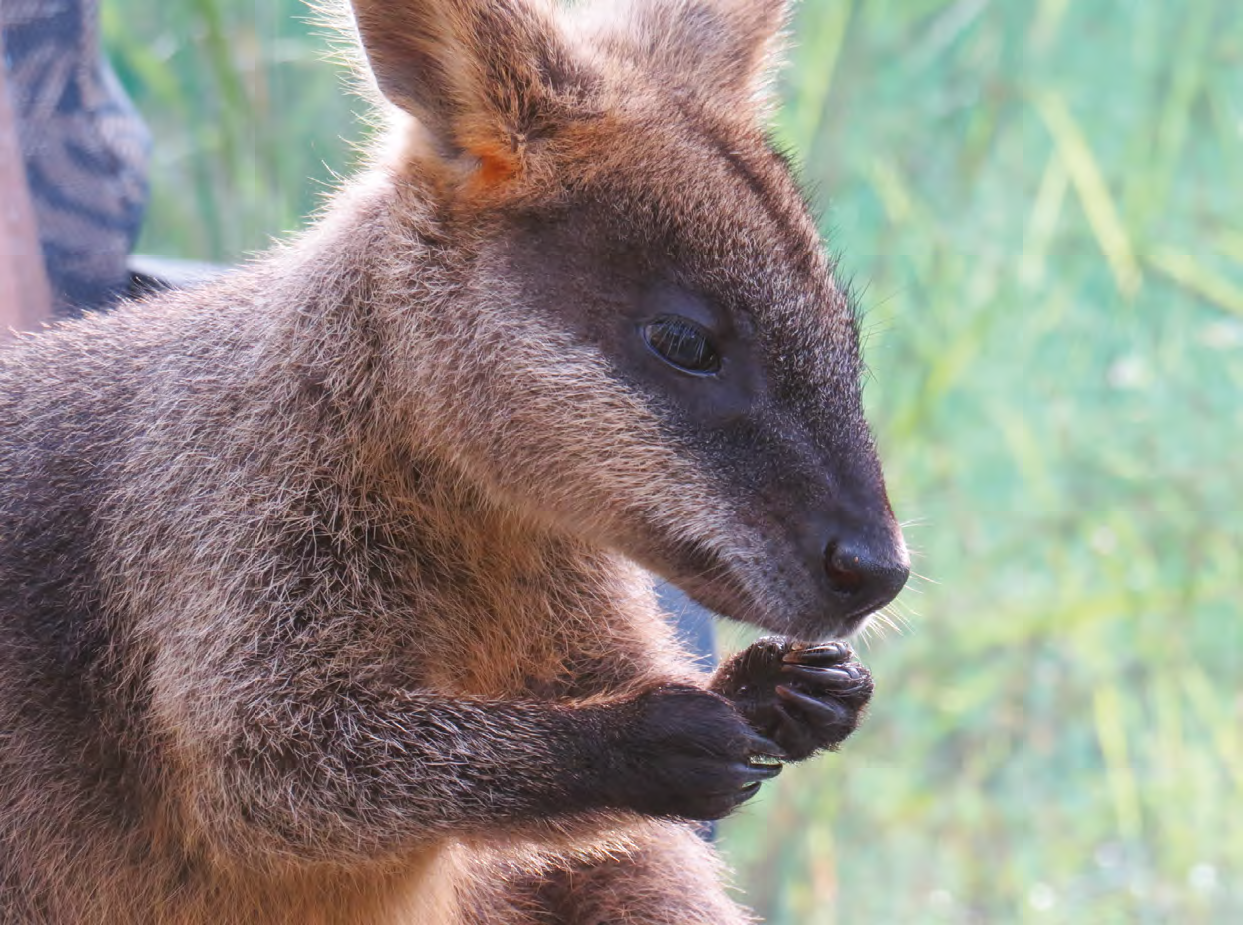
Australia is fortunate to have incredible landscapes and has one of the richest assemblages of endemic species on the planet occupying an amazing diversity of habitats. This has led to it being considered one of just 17 ‘megadiverse’ countries worldwide. Yet less than 12 percent of the Australian landmass has some form of security as a protected area at present, and as a result we have the unfortunate title of having one of the worst records for mammal extinctions and near extinctions of any developed country.
Protecting and preserving our habitats and ecosystems is essential to the survival of all wildlife, and each acre left unexploited safeguards native animals that desperately need our help to survive – put simply, every bit of bush counts. The role of private lands has now become an integral part of the solution, and owners of property who have a concern for wildlife and habitat protection are in the unique and important position to make a very real contribution to conservation efforts across the country. Working under the guiding principle of humane stewardship, the Wildlife Land Trust (WLT) network of national and international sanctuaries on private lands seeks to unite the many people dedicated to wildlife and habitat protection.
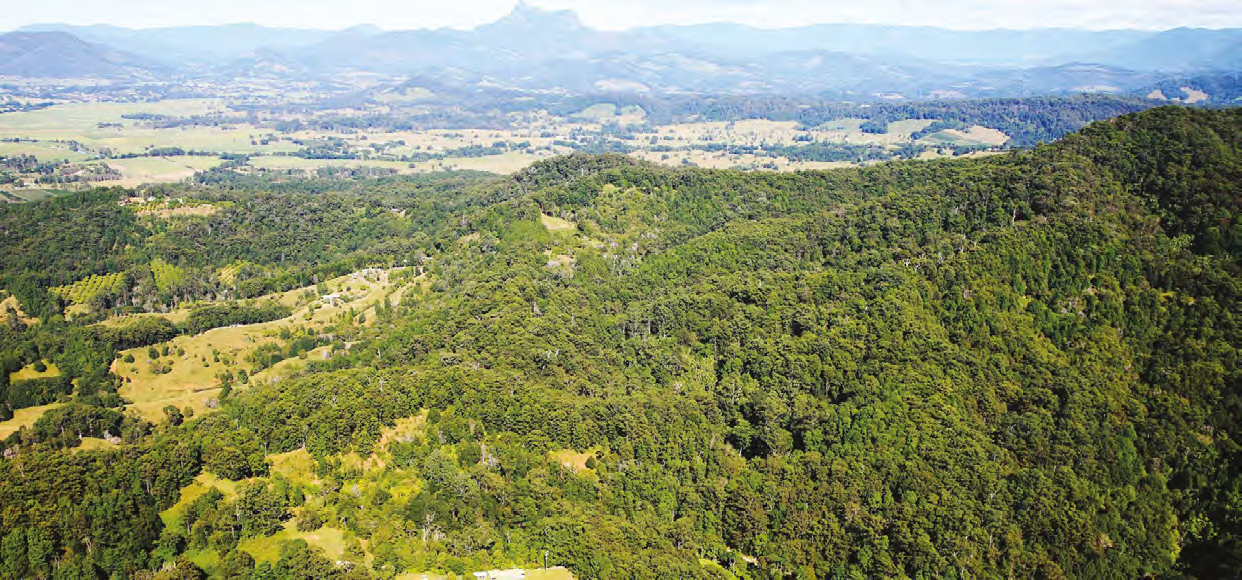
Aerial view of Urliup Wildlife Sanctuary, a WLT refuge. Ron and Sandra Clark
ABOUT THE WLT (AUSTRALIA)
Operated under the auspices of Humane Society International (HSI), the Wildlife Land Trust is an international network of private lands dedicated to wildlife and habitat conservation. In 2007, Humane Society International launched the WLT Australia in an effort to preserve and protect our vital native habitats and the animals that depend on them, in a network of sanctuaries throughout the country and internationally. Working under the guiding principle of ‘humane stewardship’, the WLT protects not only vast and impressive landscapes, but also the smaller, humbler places that provide for the needs of all wildlife, rare and common species alike. It’s a very inclusive network, and welcomes member sanctuaries from a variety of land-uses anywhere in size from one acre up to thousands of hectares.
With habitat conservation receiving few favours from governments throughout Australia in an ever-changing political landscape, the benefits delivered on privately conserved land have become all the more vital. In Australia, WLT member sanctuaries collectively protect more than 40,000 hectares of wildlife habitat in six states.
The number of member properties and the interest in the program is growing every day, with several properties in various stages of registration. Having sustained steady growth over the past four years - welcoming new member sanctuaries at the approximate rate of just over one property per week - the WLT has grown to include 285 wildlife-friendly sanctuaries around the country – a very promising sign. Membership in Australia is free of charge, linked to a non-binding wildlife and habitat conservation agreement. Our goal is to see the protection of one million acres of wildlife habitat across the country in the Wildlife Land Trust sanctuary network.
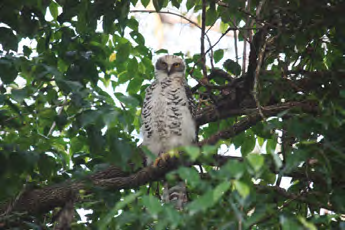
Powerful owl - Berrinba Sanctuary. B Robinson
STATISTICS
Around half of the current 285 Australian Wildlife Land Trust member sanctuaries are actively involved in the rehabilitation and care of orphaned or injured wildlife, which goes to show the deep connection people committed to such work have with the reality that their efforts count for little if there isn’t adequate natural habitat available for the individuals they care for. Furthermore, just under 100 members of the WLT additionally have in-perpetuity conservation agreements on their property title, demonstrating a high level of willingness to ensure the habitat protection work done (and future intentions) on the property is conserved for generations to come. New South Wales is the most represented state in the WLT network with 125 sanctuaries, although Queensland boasts the largest land coverage with 22,250 hectares of wildlife-friendly land.
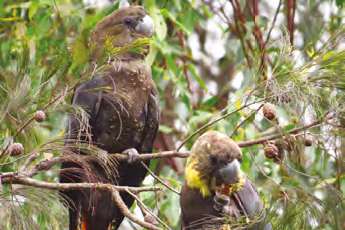
Glossy black cockatoo - Jens and Ute’s Refuge. J Sohnrey
BENEFITS TO MEMBERS
Benefits of membership of the Australian WLT program include: becoming part of a continually growing national and international network of sanctuaries promoting best conservation practices and protecting wildlife and habitats around the world; help from HSI if a member has problems with local developments impacting their sanctuary; the facilitation of useful communication between sanctuary members, WLT staff and experienced land managers and native wildlife rehabilitators; advice and help on upgrading protection for sanctuaries if required, including undertaking covenanting processes on behalf of the owner; the opportunity to talk about the invaluable work undertaken to protect important wildlife habitats through feature pages on our website and in our regular Wildlife Lands newsletter; large WLT signs to signify member properties, and potential access to management funds through the Private Land Conservation Grants Program (discussed later in this article).

Gang gang cockatoo - Pirli. P Dickens
The program is completely voluntary and there are absolutely no costs or legal obligations involved - becoming a member of the WLT will effectively complement any current arrangements landowners already have on their properties, legal or otherwise.
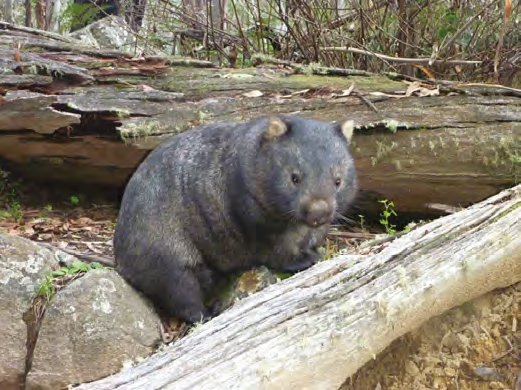
Bare-nosed wombat - Edala. M Wynan
VOLUNTARY CONSERVATION AGREEMENTS
New South Wales members of the WLT can now benefi t from the program’s partnership with the Offi ce of Environment and Heritage, which authorises WLT staff to conduct Voluntary Conservation Agreement assessments and assist with their fast-tracked establishment. A full analysis of WLT sanctuaries that may be eligible for such a conservation status, and the preparation of several of these agreements is currently underway. The covenant for the first property to be assessed through the arrangement is in the process of finalisation. This service is offered free to WLT members within NSW, with plans to explore similar covenanting arrangements nationally.

Short-beaked echidna - Stringybark Sanctuary. P May
PRIVATE LAND CONSERVATION GRANTS
The WLT is also a founding partner of the NSW Private Land Conservation Grants Program, administered by the Foundation for National Parks and Wildlife and partnered by the NSW Office of Environment and Heritage Conservation Partners Program, NSW Conservation Trust, Paddy Pallin Foundation, Diversicon Environment Foundation, the NSW Catchment Management Authority and the Community Environment Network. Three successful years of grants led to signifi cant investment by the NSW Government’s Environmental Trust, and since 2008 in excess of $1 million has been awarded to 266 projects around NSW for biodiversity conservation works, including many WLT sanctuary owners. In 2014, the program was launched in Victoria, and there are plans to see a successful roll-out nationwide. This program supports landholders dedicated to conservation in achieving biodiversity protection activities on their land – an essential follow-up to the initial entering into of private land conservation programs – and WLT membership is the first step to getting involved.

Squirrel glider - Casper’s Hideaway. J McCann
WLT PROPERTIES FOR SALE
The Wildlife Land Trust offers free property listing to its members to assist in what can be a stressful time, and in an attempt to ensure that a like-minded buyer can be found and the property remain in the WLT network. Care for your land, the habitat it provides and the wildlife that call it home does not cease when it comes time to move on, and we hope that keeping existing WLT refuges in wildlife-friendly hands can go some way to assuring those selling their properties that their years of careful stewardship will not go to waste. Like everything with the Wildlife Land Trust, this service is completely free of charge.
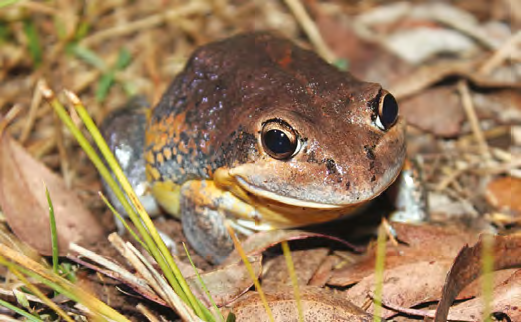
Scarlet-sided pobblebonk frog - Jarowair. J Gray
WLT PLACES YOU CAN STAY
Due to the large number of our members offering accommodation on their Wildlife Land Trust sanctuaries, we’re in the process of establishing an online database of WLT Places You Can Stay – which may be of particular interest to readers of The Wanderer. From all-inclusive bed and breakfasts through to campsites or somewhere to pull up your vehicle, this service aims to support our members in their eco-friendly endeavours as well as providing a quality resource for people looking to spend some time in wildlife-friendly places. Be sure to keep an eye on www.wildlifelandtrust.org.au for developments.
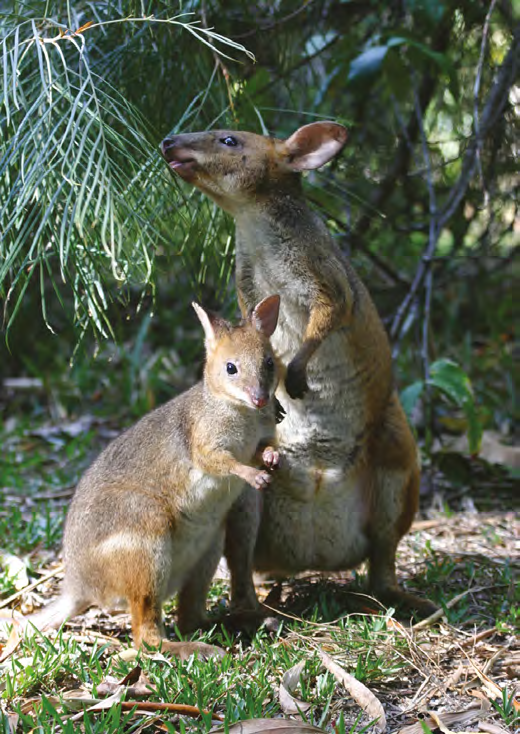
Red-legged pademelon - Thylogale Nature Refuge. D Armbrust
THE WLT INTERNATIONALLY
Another aspect that sets the WLT apart from other private land conservation measures is its international reach. Founded in the United States in 1993, the American WLT contingent owns and manages in excess of 100 conservation sanctuaries, while several member refuges in Indonesia, India and South Africa have close ties with the Australian WLT offi ce. Regular updates from these worldwide members and the steadily growing Australian contingent unite the individual efforts of many from around the globe, which amount to an incredible contribution to biodiversity conservation and environmental benefi ts for all. We are continuing to seek the expansion of WLT sanctuary partnerships throughout Africa, India, South America, New Zealand and south-east Asia, with the global WLT coverage in excess of two million acres of habitat worldwide at present.
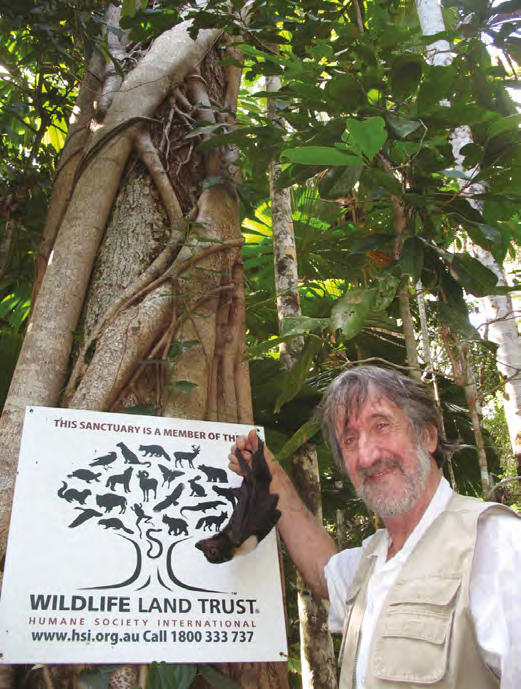
Wildlife Land Trust Sign 2. Tony Young
LEARN MORE, OR JOIN TODAY!
The WLT is a very inclusive initiative, as shown by the sizes, uses and locations of our member sanctuaries. Whether your property is one or 1000 hectares, a family home, a working farm or one dedicated to conservation, you’ll be making a positive difference for native wildlife and habitat conservation by joining this like-minded, non-binding and risk-free network without cost or legal obligation. And it complements any existing or future agreements you make to protect your land. Learn more about this exciting program at www.wildlifelandtrust.org.au.

Black swans - Lake Mealup. A Bolger
Category: Features
Written: Thu 01 Jan 2015
Printed: January, 2015
Published By: